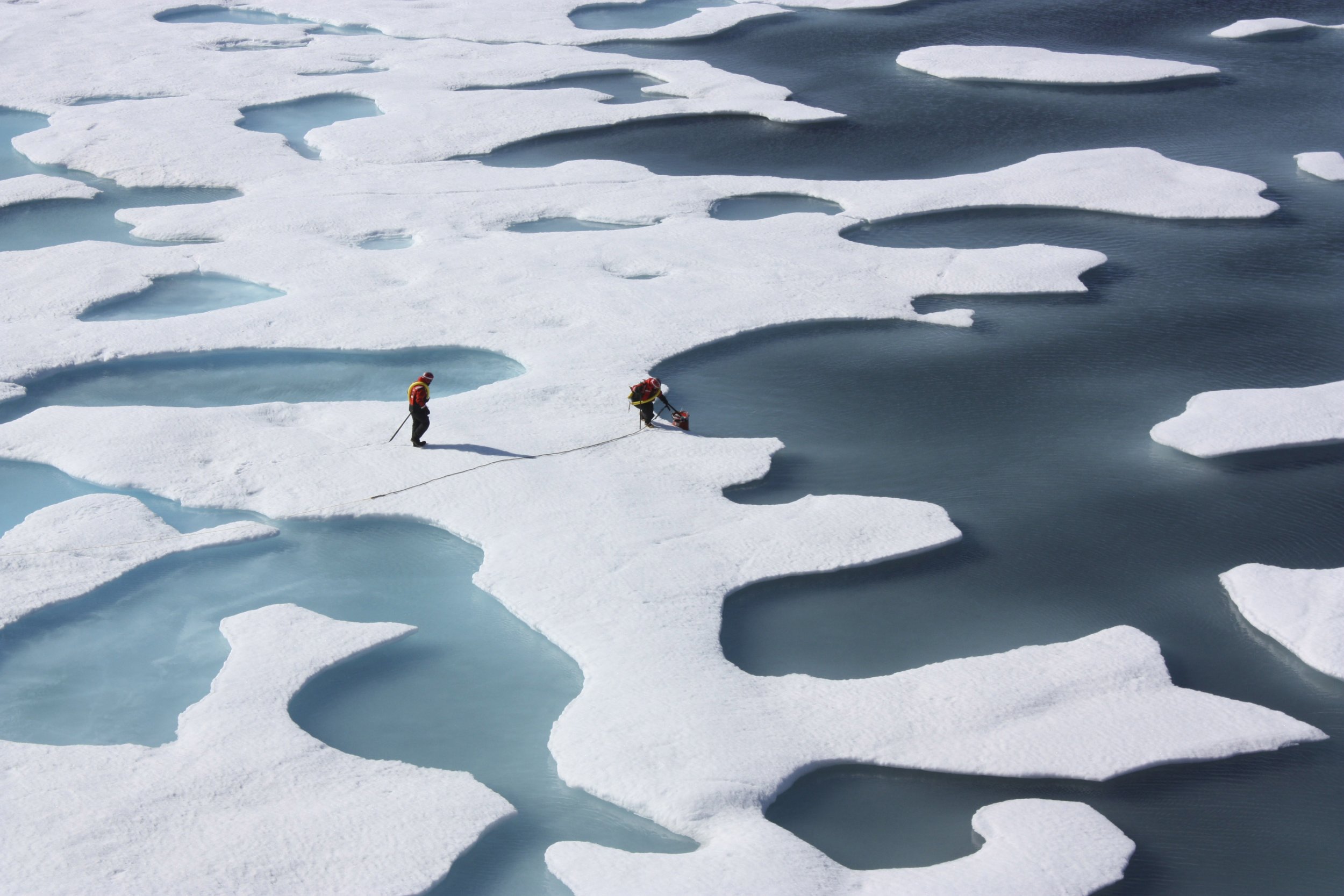
December temperatures in New York were warm enough to spot Rockefeller Center ice skaters in shorts, and it wasn't only East Coast residents who felt summer was coming way too soon. On December 30, temperatures over a vast area around the North Pole were somewhere between 30 and 35 degrees Fahrenheit, typical of midsummer for the region. It's no surprise then that sea ice physicists now say relatively little new sea ice formed in the Arctic this past winter, and that ice cover in the Arctic Ocean could shrink to the historic low levels seen in 2012.
A team of researchers placed seven buoys on sheets of floating ice last autumn to measure the thickness of the snow cover, along with air temperature and air pressure. Their analysis showed the temperature in the Arctic in February was as much as 8 degrees Celsius—roughly 14 degrees Fahrenheit—higher than average temperatures during previous years.
The scientists worry that's enough to see the surface of Arctic sea ice shrink to 2012 levels, when it reached a record low of 3.4 million square kilometers, or about 1.2 million square miles. That's just a prediction; contemporary polar research isn't yet capable of determining exactly what Arctic sea ice will look like several months from now because the ultimate fate of the ice is determined by the wind conditions and air and water temperatures during the summer months.
Foundations are laid during the preceding winter, however. And while the relative warmth of this recent winter didn't cause sea ice to melt, it didn't allow much to accumulate either, creating relatively thin sheets of ice out on the Arctic. In previously ice-rich areas such as the Beaufort Gyre off the Alaskan coast or the region south of Spitsbergen in northern Norway, the sea ice is considerably thinner now than it normally is during the spring. The same is true for regions north of Alaska, where scientists are reporting sea ice thickness more than a foot less in depth than is typical. Such thin ice is sure to melt come summer, according to Stefan Hendricks, a sea ice physicist at the Alfred Wegener Institute of the Helmholtz Center for Polar and Marine Research in Bremerhaven, Germany.
"Accurate predictions month over month are currently beyond anyone's capabilities. But if the atmospheric conditions resemble those of 2012 we can expect similar low sea ice extent in the Arctic or even a new record minimum," Hendricks says.
That's bad news for the fastest-warming region on the planet. The open ocean absorbs much more energy from the sun than does sea ice, says Hendricks. In other words, less ice on the surface of the Arctic Ocean means more climate warming.
More imminent is the danger thinner ice would pose for communities living with the sea ice since thinner ice makes for more dangerous travel, according to Hendricks. Because sea is known to dampen waves, less ice coverage could also mean greater swells and increased coastal erosion.
Uncommon Knowledge
Newsweek is committed to challenging conventional wisdom and finding connections in the search for common ground.
Newsweek is committed to challenging conventional wisdom and finding connections in the search for common ground.
About the writer
To read how Newsweek uses AI as a newsroom tool, Click here.








